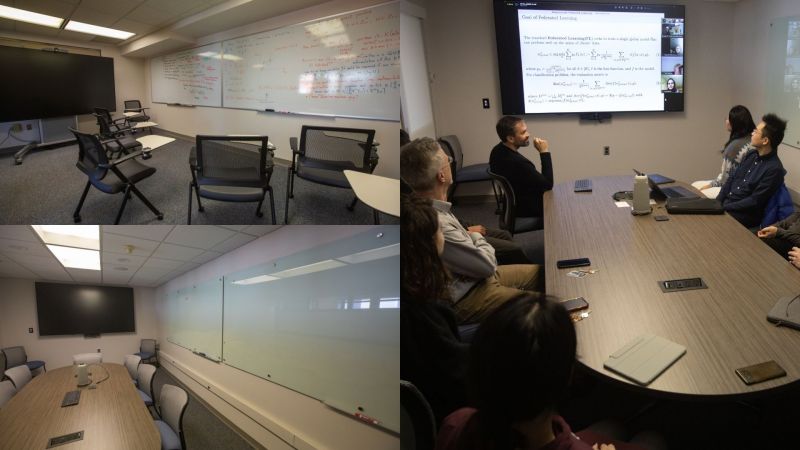
Renovations to Lehigh’s Harold S. Mohler Laboratory have made the home of Lehigh’s Department of Industrial and Systems Engineering (ISE) a more high-tech, comfortable, and functional environment for learning and research.

“Improvements like these make an impact on the educational enterprise,” says Luis Nunes Vicente, Timothy J. Wilmott '80 Endowed Faculty Professor and ISE department chair, who led efforts to upgrade the facility over the past three years. “Today, thanks to an investment of approximately $250,000 from the department, students and faculty have greater access to advanced equipment, more inviting common spaces, and easier scheduling.”
The overall goal, says Luis, was to bring a more contemporary feel to Mohler Lab while fostering a greater sense of community within its walls.
 Lehigh purchased the four-story building at the corner of Packer and Brodhead avenues (which was originally the home of Congregation Brith Sholom and still retains distinctive 1920s features such as stained glass windows) in the 1980s and dedicated it to ISE alum Harold S. Mohler ’48, who served as a university trustee for more than a decade.
Lehigh purchased the four-story building at the corner of Packer and Brodhead avenues (which was originally the home of Congregation Brith Sholom and still retains distinctive 1920s features such as stained glass windows) in the 1980s and dedicated it to ISE alum Harold S. Mohler ’48, who served as a university trustee for more than a decade.
Recent improvements focus on areas that facilitate communication and collaboration, says Luis.
In particular, two new smart conference rooms were created for communications and brainstorming. Both rooms feature AI-powered video conferencing, which is essential, he says, for conducting hybrid meetings with both in-person and remote attendees.
Renovated offices provide bright, modern workspaces for graduate students and visiting researchers. Digital signage conveys timely information and adds to the contemporary look. And updates to common spaces, including furnishings in the main lobby and the Gott Lounge (named after ISE alum Edwin H. Gott ’29, former U.S. Steel CEO), offer students hospitable environments for solo study, group work, or socializing between classes.

Classrooms and computer labs have been optimized with features such as wall-to-wall whiteboards and enhanced projector capabilities—improvements that might seem mundane to outsiders but, says Luis, show that the spaces have been “tuned to perfection” for teaching the advanced analytics and optimization of ISE.
Even small changes—such as increasing storage capacity and organization as well as ensuring that every space is clearly labeled with its occupant or designated purpose—help to enhance the overall work and learning environment, he says.
The updates also extend to the building’s exterior: Mohler’s brick and marble facade has been professionally cleaned and enhanced with the addition of highly visible signage and a sleek, lighted awning that provides protection from inclement weather. A section of the front sidewalk was also redone to improve accessibility.
When Mohler Lab was dedicated in 1986, it was dubbed a “facility of the future.” Ensuring that it stays that way is a departmental priority, says Luis.
“These efforts are part of an ongoing process to maintain and improve ISE’s facilities. It’s a process that has and will continue to be important to our department.”

